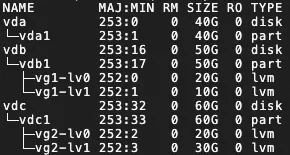If your simple application server cannot meet your business requirements, you can smoothly migrate data from the simple application server to an Elastic Compute Service (ECS) instance to implement more flexible resource configuration. The source simple application server and the destination ECS instance must belong to the same Alibaba Cloud account but can reside in the same region or different regions. This topic describes how to use Server Migration Center (SMC) to migrate data from a simple application server to an ECS instance.
We recommend that you preferentially use the image copy and image sharing features of Simple Application Server to migrate data from a simple application server to an ECS instance. For more information, see Migrate data from a simple application server to an ECS instance. If the preceding features cannot meet your requirements, you can use the method described in this topic to migrate data from a simple application server to an ECS instance.
Scenarios
(Recommend) Migrate data from a simple application server to an ECS custom image in the same region or across regions.
If you have not purchased a destination ECS instance, you can migrate data from a simple application server to an ECS custom image and then create an ECS instance based on the custom image.
Migrate data from a simple application server to an existing ECS instance in the same region.
If you have purchased a destination ECS instance, and the storage and operating system of the simple application server are the same as the storage and operating system of the destination ECS instance, you can migrate data from the simple application server to the existing ECS instance.
WarningAfter you migrate the data, the original data in the destination ECS instance is deleted, and the data on the simple application server is not affected. If the destination ECS instance contains important data, we recommend that you do not migrate data from a simple application server to the destination ECS instance.
Impacts
Before the migration, take note of the information in the following table.
Item | Description |
Data directory | During migration, SMC can automatically generate a disk partition structure that is as consistent as possible with that of the source server based on the disk partition structure of the source server. You can adjust the partition structure of the destination disk as needed, including the partition size and location sequence, transfer mode, and whether to enable LVM. By default, all the disks of the server are migrated, but the following conditions still need to be considered:
For more information, see Step 2: Migration settings. |
Intermediate instance | Do not perform operations on the intermediate instance during the migration. To run a migration job, SMC creates a temporary intermediate instance named Note When you migrate a server to an ECS instance, the ECS instance serves as the intermediate instance. |
IP address | After the migration, the IP address of your server is changed. If your business involves IP address configuration, change the IP address after the source server is migrated.
|
Underlying hardware | After the migration, the underlying hardware may change, and the application licenses that are associated with the underlying hardware may become invalid. Perform checks based on your business requirements.
|
Prerequisites
The preparations for server migration are complete. For more information, see Before you begin.
If you want to migrate data from a simple application server to an existing ECS instance, the following requirements must be met:
Back up the important data on the destination ECS instance to an image, snapshot, or storage device other than the instance.
The operating system of the destination ECS instance is the same as that of the source server.
The number of data disks attached to the destination ECS instance is greater than or equal to that of data disks attached to the source server. Otherwise, the disk data of the source server cannot be migrated to the destination ECS instance. In this case, you must attach more data disks to the ECS instance. For more information, see Attach a data disk.
The capacity of the system disk and data disks attached to the ECS instance is larger than or equal to that of the system disk and data disks attached to the source server. If you want to shrink the system disk and data disks attached to the source server, make sure that the capacity of the system disk and data disks attached to the destination ECS instance is larger than or equal to the size of the data on the system disk and data disks attached to the source server. Otherwise, data of the source server cannot be fully migrated to the destination ECS instance. In this case, you must scale up the data disks and system disk. For more information about how to resize a cloud disk, see Overview.
Procedure
Step 2: Migration settings
Verify the migration result
Clear resources
What to do next
If you need to migrate incremental data multiple times, you can initiate incremental data migration multiple times at custom intervals after the first full migration is complete. This synchronizes the incremental data generated by the source server to Alibaba Cloud and reduces the suspension time and delivery time of the services provided by the source server. For more information, see Migrate incremental data from a server.







 before the mount target.
before the mount target.


 > Clear migration task
> Clear migration task